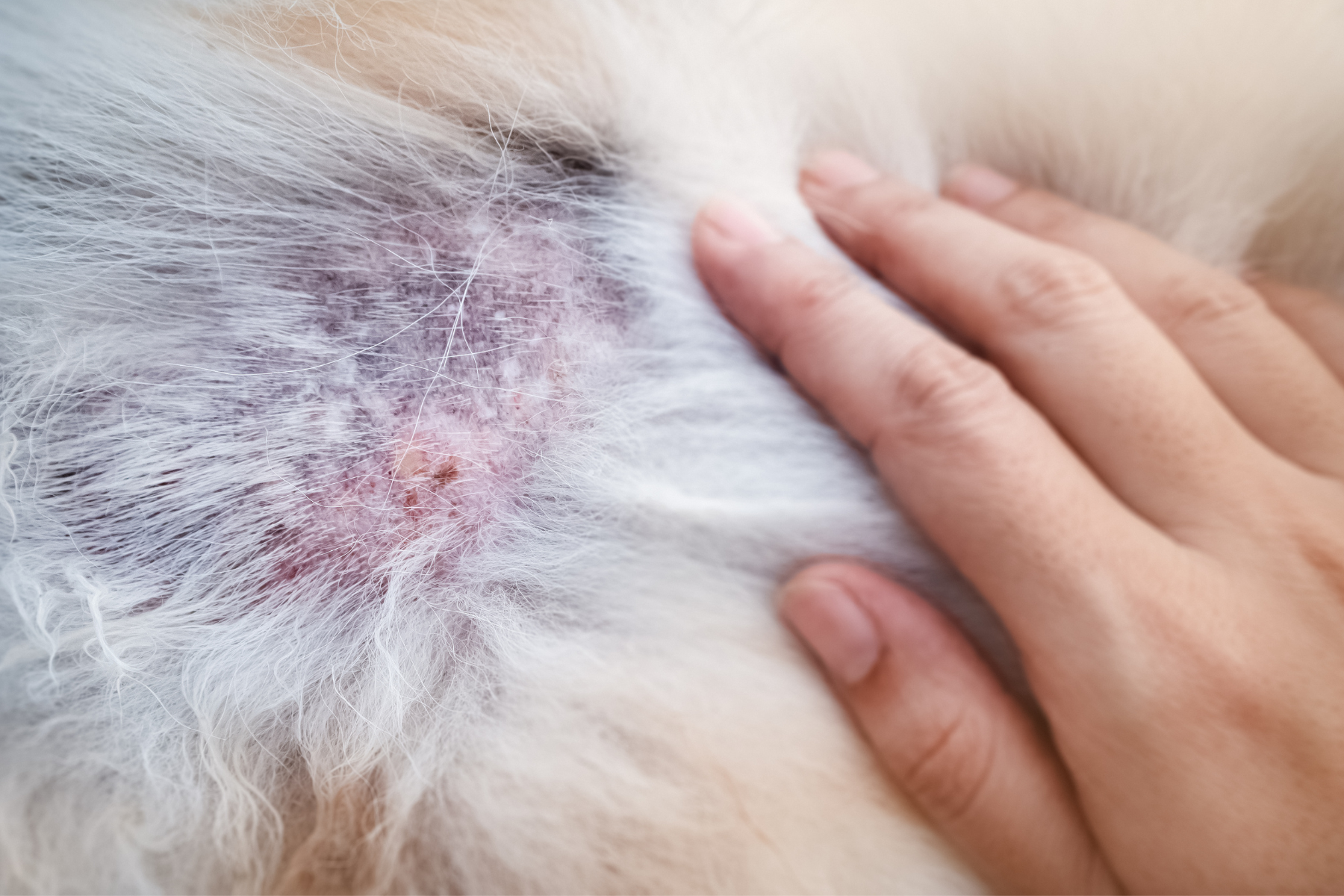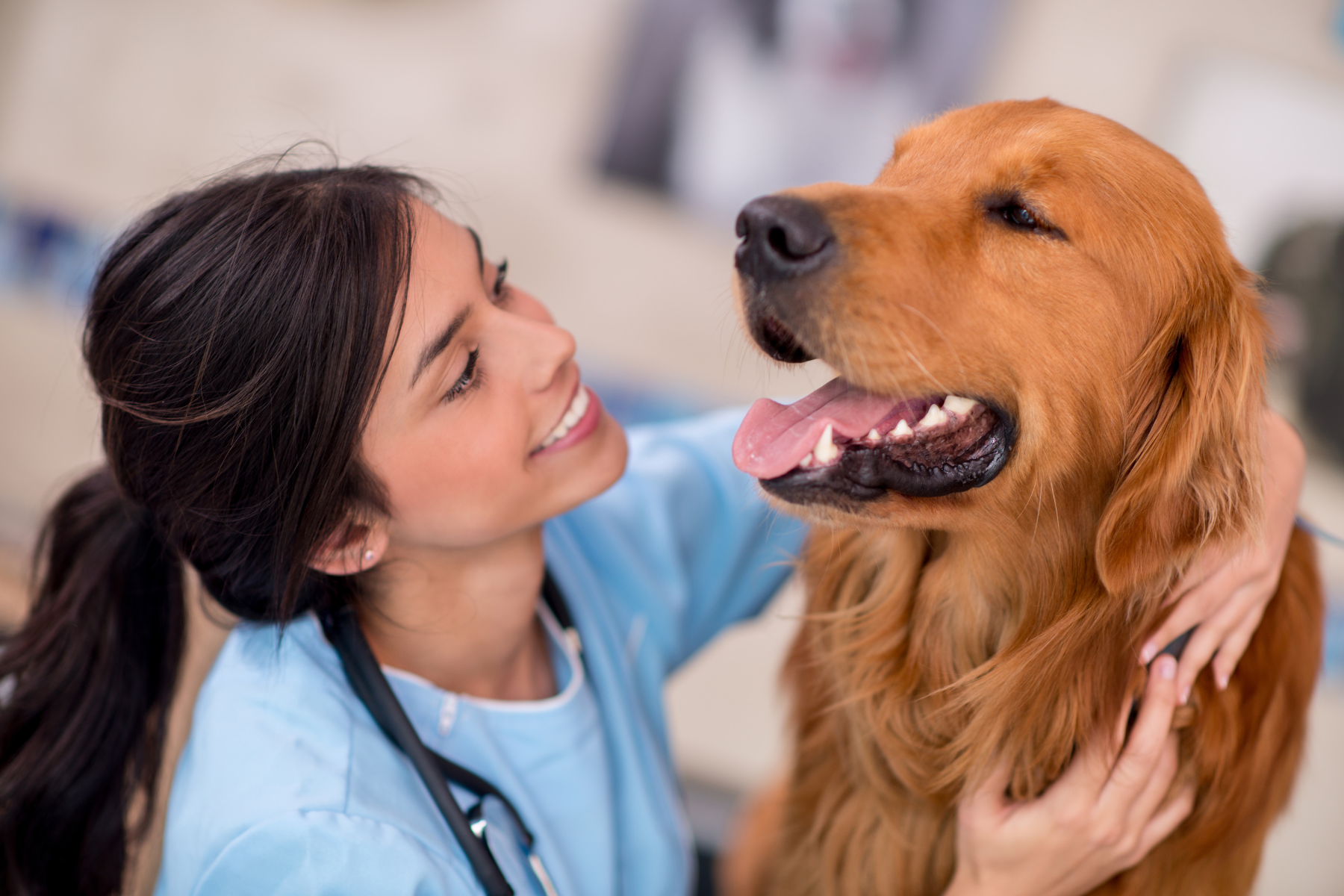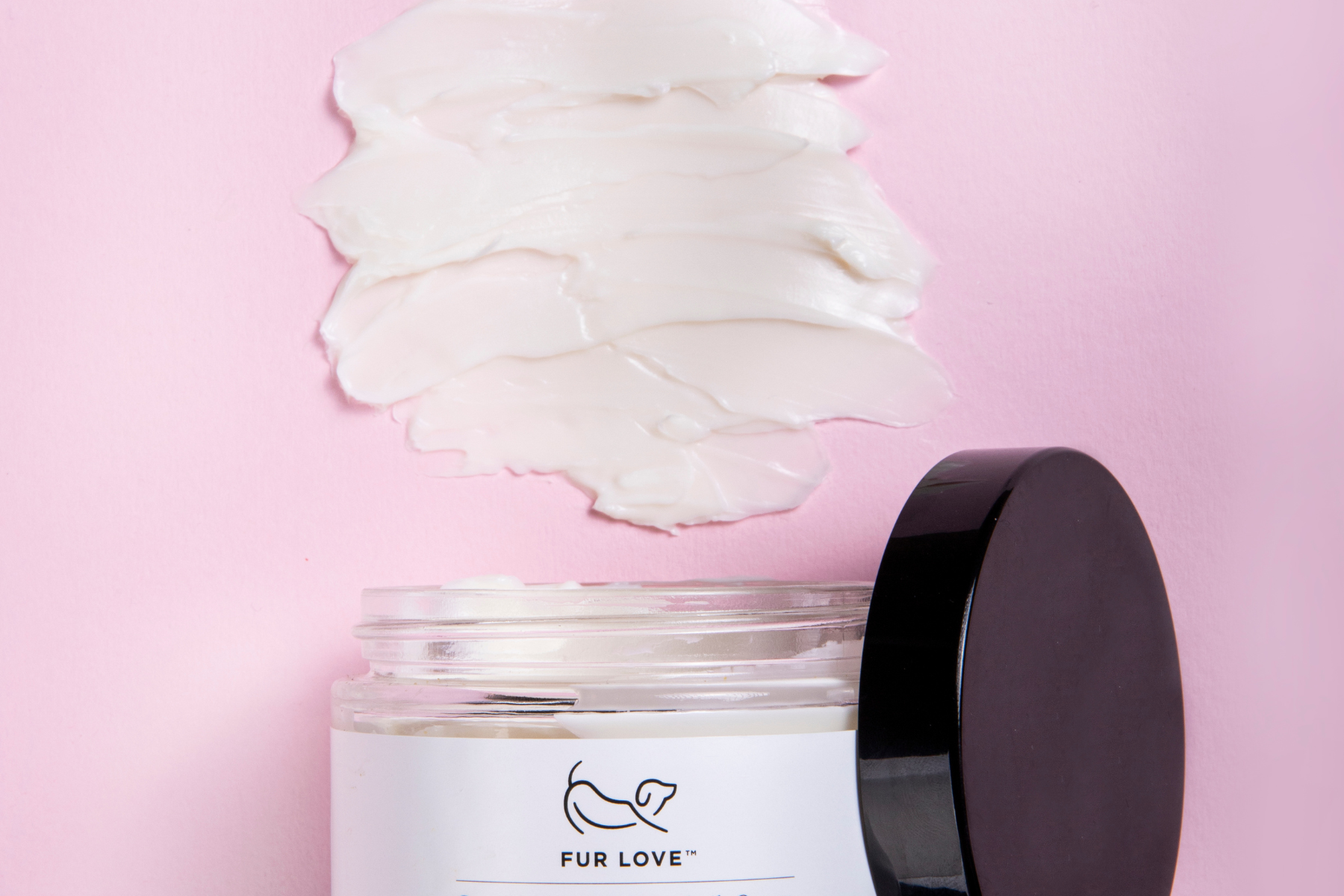Does My Dog Have a Rash or a Hot Spot?
Dogs can develop rashes or hot spots all year round, but they are more frequent during warmer weather, humidity, and regular swimming. Understanding them is critical to keeping your pet itch-free and comfortable year-round.

- Dog Hot Spot vs Dog Rash >
- Success Stories >
- Skin Routine to Prevent Hot Spots and Rashes >
- Causes of Dog Hot Spots & Dog Rashes >
This is your heading text.
What is the difference between a Dog Hot Spot vs a Dog Rash?
Dog Hot Spot
(Pyotraumatic Dermatitis)
These red, inflamed, broken skin often begin as small red areas. Dog hot spots are triggered by scratching, licking or chewing the affected area. They exacerbate quickly into hot, red, loss of hair, crusting or matting of the surrounding hair, oozing and may contain pus. There are many precipitants, but finding the cause and managing the early signs are vital to preventing it from getting infected. We advise visiting your veterinarian if your dog has developed an infected hot spot. Once the hot spot is healed, we recommend a skin routine to develop a healthier, stronger and more resilient skin barrier.
Dog Rash
(Dog Dermatitis)
A dog rash is a general term to describe abnormal changes in a dog's skin, resulting in redness, irritation or discomfort. Allergies, insect bites, contact with irritants, or underlying health issues commonly cause them. They manifest as redness, inflammation, itchiness, pustules, and scales. They can develop into a hot spot if your dog starts scratching, licking, or chewing the area. We advise you to figure out the root cause and follow our skin routine for rashes to reduce the severity and development into a hot spot. Also long-term - maintaining a skin routine to develop a healthier, stronger and more resilient skin barrier.
Improvement in redness, rashes & itching
*Results from veterinary clinical trial of dogs using Fur Love daily for seven days
87%
100%
of dog parents felt more confident they could manage skin problems with a vet prescribed Fur Love Regime
*Results from veterinary clinical trial of dogs using Fur Love daily for seven days
Real Results: Success Stories
DOG HOT SPOT: ARMPIT
A mixed breed dog had broken, inflammed skin in the armpit region causing discomfort and infection.
SHOP THE ROUTINE:
Step 1: Paw & Body Soak wipe downs PM
Step 2: Moisture Balm AM & PM
Significant improvement in the epithelialisation of the skin, scarring and fur loss. Overall, recovery was quicker, and long-term use prevented re-occurring as the dogs skin barrier is healthier.
DOG RASH: UNDER ARMPIT
This staffy had atopic dermatitis: red lumps and dry flakey skin that, if left, would soon get infected. This appeared shortly after an adventure walk.
SHOP THE ROUTINE:
Step 1: Paw & Body Soak wipe-downs AM & PM
Step 2: Moisture Balm AM & PM
Dramatic 48hour recovery and long-term prevention. English Staffordshire Terrier's owner was relieved as last time they had to go to the vet.
Skin Routine to Prevent Redness, Rashes & Hot Spots:
Once you have determined the cause of your dog's redness, rashes or hot spots, a skin and coat care routine is essential. The goal is to give you more power at home with a routine if you notice early signs of irritation, hoping it keeps you from a vet visit. Clean, hydrated, and protected skin is more resilient.
Top Causes for Dog Rashes & Hot Spots
There are a number of reasons why dogs may experience dog hot spots and dog rashes. Finding the cause with your veterinarian is recommended.
- Allergies:
Dogs can develop allergies to various substances, including food, pollen, dust, and environmental allergens. - Parasites:
Infestations of fleas, mites, ticks can cause intense itching and discomfort, which can lead to hot spots and rashes. - Skin Infections:
Bacterial or fungal infections, such as staph or ringworm, can lead to skin rashes and hot spots. These infections often require medical treatment. - Contact Dermatitis:
Dogs can develop rashes and hot spots from coming into contact with irritants like harsh chemicals, plants, grass or even certain grooming products. - Food Allergies:
Some dogs may be sensitive or allergic to specific ingredients in their food, which can result in skin issues, including rashes and hot spots. - Underlining Health Conditions:
Autoimmune disorders, hormonal imbalances and other diseases can affect the skin health and potentially lead to rashes and hot spots. It is important rule these out with your veterinarian. - Stress and Anxiety:
Dogs may develop hot spots and rashes as a result of excessive licking or chewing their own fur due to stress or anxiety. - Heat and Moisture:
Excessive moisture, especially in hot and humid conditions, can create an environment conducive to hot spots, as bacteria can thrive in damp fur. - Trauma and Scratching:
Dogs may scratch, bite, or lick themselves excessively due to irritation, injury, or boredom, which can result in hot spots.















